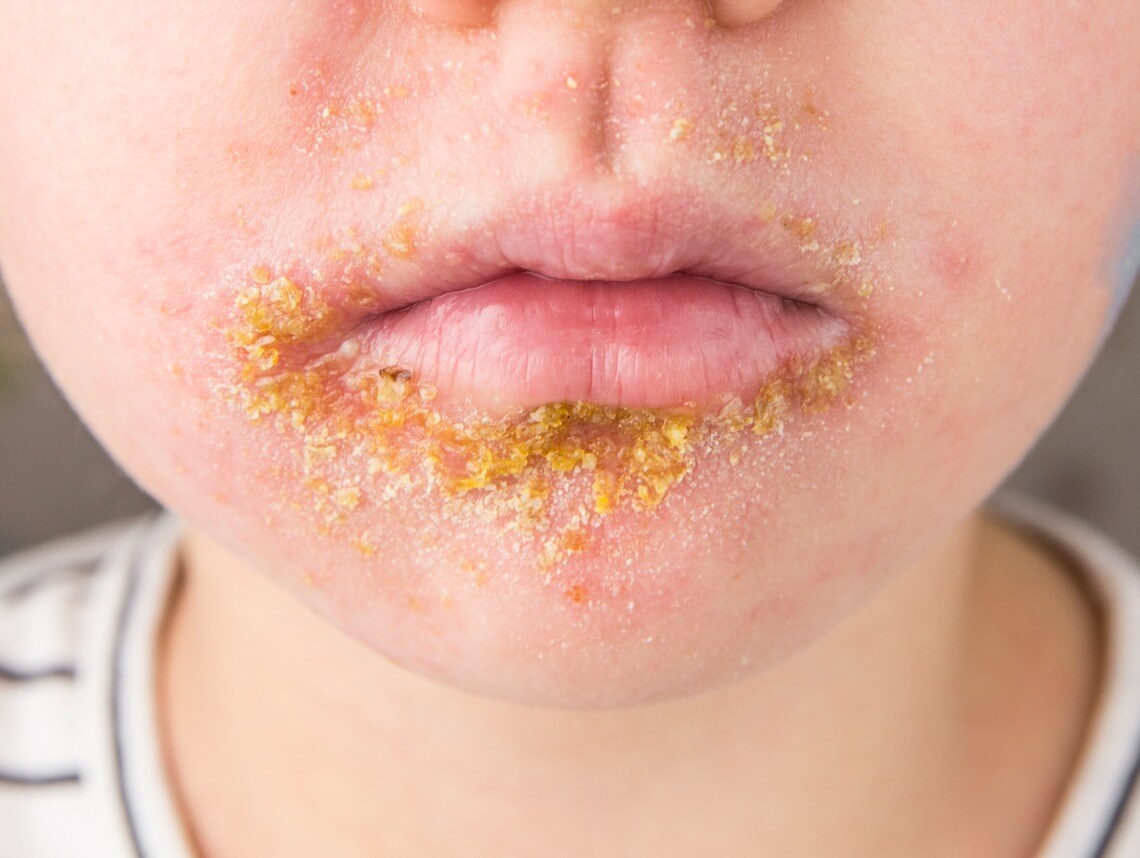Skin conditions in children can be some of the most difficult and frustrating issues to deal with, even if they last a relatively short period of time. The itching and swelling can cause extreme discomfort that makes your little one want to scratch — even though it’s the last thing they should do. What’s more, skin problems can also be unsightly and embarrassing, making your child self-conscious and causing potential problems with confidence and self-esteem.
The good news with impetigo is that it is highly treatable and often improves in a short period of time. During the recovery process, your child may have some specialized care needs, which is why we’re here to help. The following overview can help you better understand this condition and treatment options so you can take an active role in your little one’s health.
What is impetigo?
Impetigo is a highly contagious bacterial infection that commonly develops in infants and young children. This condition typically takes the form of reddish sores that can appear around the face and sometimes on hands and feet. Doctors will most often treat this condition with antibiotics.
Practical prevention steps, including washing clothes, cleaning skin, and treating cuts and scrapes can help limit the spread of impetigo and reduce the risk of infection or reinfection.
Impetigo Causes
According to the Centers for Disease Control and Prevention (CDC), impetigo is caused by either the bacteria group A Streptococcus and/or Staphylococcus aureus. The condition can be caused by one or both types, with group A Streptococcus, or group A strep, being the form more commonly associated with impetigo.
Impetigo Risk Factors
The most common risk factors for children who develop impetigo include:
- Children who are aged two to five are most often affected
- Having a cut, bite, or other skin break that encourages bacterial infection
- Being in a crowded setting with close contact, such as a daycare facility, school, crowded residence, or participating in certain sports
- Having another skin condition such as atopic dermatitis
- Being immunocompromised, or having any condition that weakens the immune system
- Living in or visiting a warm, humid climate, or experiencing warm and humid weather
Impetigo Symptoms
Upon developing impetigo, typical symptoms can be:
- Reddish sores and bumps around the nose and mouth, as well as the hands, legs, or feet
- Oozing of fluid
- A yellowish crust that develops after drainage
- Swelling and itching
- In less common cases, a form known as bullous impetigo can develop on the trunk of infants and cause blisters
- Another serious type is called Ecthyma, which results in painful pus-filled sores
Impetigo Complications
In the majority of cases, impetigo is not a dangerous condition with serious complications. It usually will not cause scarring. Cellulitis, certain kidney problems, and scarring can all occur in rare cases.
Diagnosing Impetigo
If you see any potential signs of skin infection such as impetigo, it is important to seek medical assistance as soon as possible. Properly diagnosing and treating this condition can shorten the duration of the infection and help limit the spread. You can also learn key preventative steps to lessen the risk of reinfection.
Pediatricians can typically diagnose impetigo by sight, but lab tests and cultures of the infected skin may help in some cases.
Impetigo Treatment
The most frequent treatment for impetigo is an antibiotic cream applied directly to the infected areas of the skin. Antibiotic pills may help if there is impetigo in multiple areas of the body. Cleaning and bandaging should also be prescribed to help cover the sores and prevent scratching and spreading.
Caring for a Child with Impetigo
Children diagnosed with impetigo will be advised to limit contact with other children and stay home from school and daycare until the infection subsides. This usually is a period of one to three days. Steps that can help prevent reinfection and lessen the chance of spreading impetigo include:
- Keeping fingernails short to prevent itching
- Regularly washing all clothes, towels, and bedding that comes in contact with the skin
- Wearing gloves while applying medication and bandages
- Frequent handwashing and general hygiene
For many busy families, meeting these care needs and covering school or daycare absences can be challenging. Often, children with impetigo can benefit from pediatric home health services, even over a short-term duration.
Contact Care Options for Kids for Pediatric Home Health Care
It can be hard to balance your time between work, home, and caring for a child. That’s why our team of professionals at Care Options for Kids is here to help. We have been enforcing precautionary measures and following the Centers For Disease Control (CDC) guidelines for COVID-19 to ensure the safety and health of our clients and employees.
Our home health care services offer support in the comfort of your home. We refer loving and competent nurses to provide customized care for families — from a few hours a day to around-the-clock supervision. Contact us directly to speak with a home health care professional or request a free in-home assessment. Together we can determine the best plan of action to keep your loved ones happy and healthy.
If you or a loved one are considering pediatric home health care services, contact the caring staff at Care Options for Kids. Call today at (888) 592-5855.






